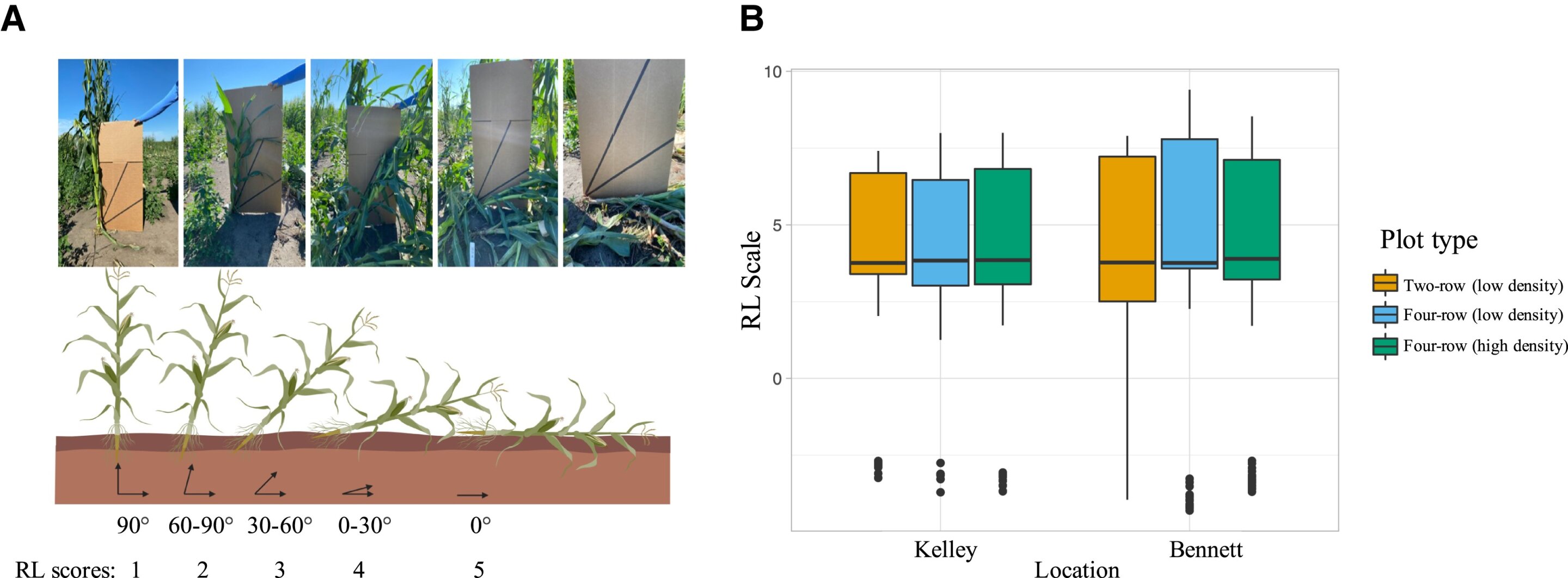When a hurricane-like derecho knocked down corn plants across Iowa in August 2020, it was devastating for farmers. But it also presented a natural experiment for an Iowa State University research team, which fanned out across flattened fields in the days after the storm to record how crops held up.
High winds caused widespread lodging, which happens when a corn plant’s stalk breaks or its roots fail to keep it upright. The genetic makeup of corn stalk strength is well-studied, but little research has looked at what makes roots more resistant to lodging. By analyzing post-derecho observations of their genotyped test plots, searching for hereditary causes of root lodging, Iowa State researchers identified 118 genes that may affect corn root stability.
“That storm was such a disaster, so it was exciting to be able to make some lemonade out of lemons,” said Patrick Schnable, Baker Professor in Agronomy and Iowa Corn Promotion Board Endowed Chair in Genetics.
The root lodging study, published in the journal Plant Physiology, is an example of how advanced statistical analysis can help mine the expanding volumes of data collected by crop and livestock breeders, hunting for hard-to-spot relationships between the genetic code and complex traits that matter.
Genetics is the cornerstone of breeding, but genomes-to-phenomes research powered by innovative statistical analysis and modeling can provide deeper insight that will be essential to meeting future agricultural production needs, said Schnable.
“There are enormous challenges facing the world in terms of food supply. Agriculture was invented in a world different than the one we’ll be facing in the coming decades,” he said.
Developing crops and livestock that are more resilient to diseases and changing weather conditions is complex and urgent, said distinguished professor of animal science Jack Dekkers. Deeper data analysis can speed up adaptation efforts.
“Breeding progress comes faster when you have a better understanding of the genetic basis of the traits you’re trying to improve,” Dekkers said.
Statistical detective work
The statistical detective work of searching for associations between genomic and phenomic data sets often tangles with environmental variation and other confounding factors. In the study of the derecho-downed corn, researchers initially weren’t able to detect the genetic causes of root lodging. Statisticians only found the genes of interest after including in their models the condition of neighboring plants, which impacted the effects of the extreme winds, Schnable said.
Associate professors of statistics Vivekananda Roy and Somak Dutta analyzed the post-derecho corn data. Their models integrate multiple methods of scanning large data sets, account for numerous sources of variation and employ strategies for more efficient processing. Their approach is like knowing the Dewey Decimal System when you’re looking for a library book instead of searching shelf-by-shelf, Roy said.
“If you know how the books are arranged, that’s a lot better,” he said.
More information:
Zihao Zheng et al, The 2020 derecho revealed limited overlap between maize genes associated with root lodging and root system architecture, Plant Physiology (2023). DOI: 10.1093/plphys/kiad194
Citation:
Researchers hunt for hard-to-spot genetic links to improve crop and livestock breeding (2023, November 8)
retrieved 9 November 2023
from https://phys.org/news/2023-11-hard-to-spot-genetic-links-crop-livestock.html
This document is subject to copyright. Apart from any fair dealing for the purpose of private study or research, no
part may be reproduced without the written permission. The content is provided for information purposes only.

